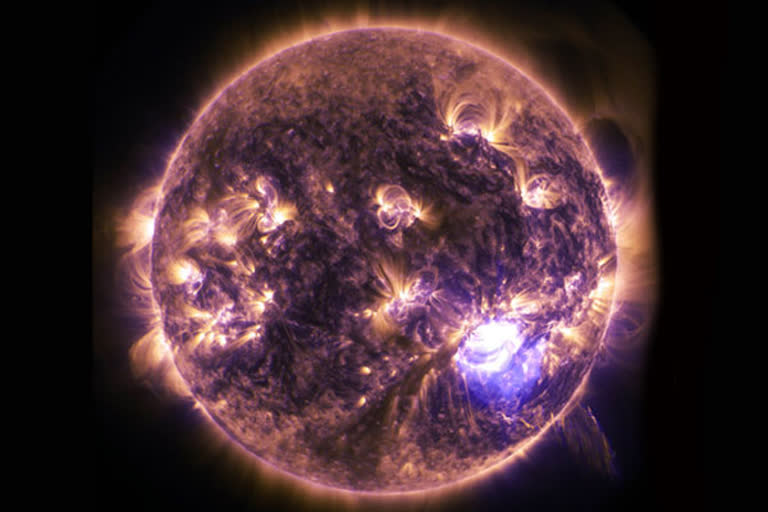Evanston (Illinois):For the first time ever, astronomers have imaged in real-time the dramatic end to a red supergiant's life -- watching the massive star's rapid self-destruction and final death throes before collapsing into a type II supernova. Led by researchers at Northwestern University and the University of California, Berkeley (UC Berkeley), the team observed the red supergiant during its last 130 days leading up to its deadly detonation. The discovery was published in 'The Astrophysical Journal'.
The discovery defies previous ideas of how red supergiant stars evolved right before exploding. Earlier observations showed that red supergiants were relatively quiescent before their deaths -- with no evidence of violent eruptions or luminous emissions. The new observations, however, detected bright radiation from a red supergiant in the final year before exploding. This suggests at least some of these stars must undergo significant changes in their internal structure, which then result in the tumultuous ejection of gas moments before they collapse.
"This is a breakthrough in our understanding of what massive stars do moments before they die," said Wynn Jacobson-Galan, the study's lead author. "Direct detection of pre-supernova activity in a red supergiant star has never been observed before in an ordinary type II supernova. For the first time, we watched a red supergiant star explode."
Although the work was conducted at Northwestern, where Jacobson-Galan was a National Science Foundation (NSF) Graduate Research Fellow, he has since moved to UC Berkeley. Northwestern co-authors include Deanne Coppejans, Charlie Kilpatrick, Giacomo Terreran, Peter Blanchard and Lindsay DeMarchi, who are all members of Northwestern's Center for Interdisciplinary and Exploratory Research in Astrophysics (CIERA).
The University of Hawaii Institute for AstronomyPan-STARRS on Haleakal, Maui, first detected the doomed massive star in summer 2020 via the huge amount of light radiating from the red supergiant. A few months later, in fall of 2020, a supernova lit the sky.
The team quickly captured the powerful flash and obtained the very first spectrum of the energetic explosion, named supernova 2020tlf (SN 2020tlf) using the W.M. Keck Observatory's Low Resolution Imaging Spectrometer on Maunakea, Hawaii. The data showed direct evidence of dense circumstellar material surrounding the star at the time of explosion, likely the same gas that Pan-STARRS had imaged the red supergiant star violently ejecting earlier in the summer.
"It's like watching a ticking time bomb," said Raffaella Margutti, an adjunct associate professor at CIERA and the paper's senior author. "We've never confirmed such violent activity in a dying red supergiant star where we see it produce such a luminous emission, then collapse and combust, until now."
